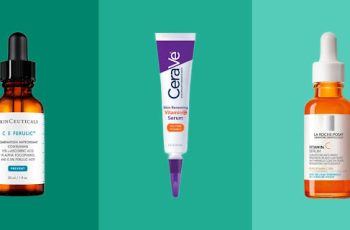
Do you need to exfoliate before using a mask?
If you’ve ever had a facial, you know how much time and effort goes into achieving that spa-like glow and baby-soft skin. With a professional facial, you can expect 3 to 4 or even more steps to skin perfection, each designed to treat a different layer of the skin. With this in mind, one wonders why when it comes to using a mask at home, we sometimes just apply it without taking the time to perform these extra steps.
In this case, exfoliating before applying a mask really can up the luxury factor and give your skin the extra care that comes with a professional treatment. So today we’re going to give you some examples of why you should exfoliate when using a mask.
Should you exfoliate before or after applying a mask?
To ensure that your skin is best taken care of by using a mask and the rest of your daily routine, there are some basic skin care rules you should follow. What we mean by this is that you should always make sure your skin is completely free of makeup, any bacteria, or residue before applying a mask. This prevents impurities from being blocked by the clay, mud, or cream mask on your skin. This often leads to clogged pores and skin breaking out with pimples and blackheads.
When it comes to the extra step of exfoliation, it is considered best to do it after cleansing the skin and before applying a mask. This helps keep the face clean and removes any residual traces and debris of the product, while removing dead skin cells with exfoliating particles. You will then find that the active ingredients in your chosen mask have a faster and more impressive effect on your complexion, leaving it radiant, detoxified and healthy. If you want to learn more about masks and how different formulas can benefit your skin, you can read a previous blog on how often you should use a mask in your skincare routine.
After removing the mask, you should use a toner. However, make sure that the formula does not contain AHA or BHA as this can be too much for the skin and cause dryness and rashes.
Can I apply a mask after a peel?
This should be absolutely fine as long as you make sure that the mask formula does not contain any chemical peels or other strong ingredients that may be too harsh on the skin. It is best to avoid peeling masks as they can make the skin feel tight and strip away important moisture and sebum. When this imbalance occurs, the skin typically overcompensates and starts producing too much sebum to restore the skin’s natural protective barrier, leading to a range of inflammation, rashes, redness, and flaky, dry patches of skin.
Can you mask and peel on the same day?
You actually can! As mentioned above, you should only exfoliate your skin before a mask if none of the following steps in your skincare routine contain AHAs, BHAs, or other chemical exfoliants.
Daily Exfoliation Skin Care
Remove Makeup
Cleanse skin with a non-foaming cleanser
Exfoliate with a physical exfoliant or cotton pad soaked with a chemical exfoliant
Use a mask made with clay, mud, or cream
Rinse with a floral toner and remove any residue without exfoliating
Apply a hydrating serum
Eye cream
Moisturizer
Daily SPF (mornings only)
Non-stripping skincare routine
Remove Makeup
Cleanse skin with a non-foaming cleanser
Apply a mask of your choice, including an exfoliating formula
Gently rub skin with a cotton pad soaked with an AHA toner
Apply a generous serum containing hyaluronic acid or niacinamide
Eye cream
Moisturizer
Daily SPF (mornings only)
To get a better idea of which routine works best for you and your skin type, you can try both and notice how your skin feels and looks afterward. Once you find the right routine, you’ll find your skin looks better than before, clogged pores are cleared, the texture feels and looks smoother, and any breakouts or rashes are significantly reduced.
What Should You Do After Wearing a Mask?
After using a mask, you should continue with the rest of your skincare routine. Of course, remember to add active ingredients that nourish, protect, and rejuvenate your skin to keep it at its healthiest.
You’ll find the ingredients below should be right for your skin type. If you find that your skin type is fairly dry or sensitive, it’s best to consult your doctor or dermatologist for comfort. As always, we strongly recommend that you do a 24-hour patch test on any new product or ingredient you add to your routine for the first time. How to Avoid Rash or Irritation Due to Ingredients That Are Too Strong and Irritating to the Skin.
Hyaluronic Acid
Niacinamide
Vitamin C (also known as Ascorbic Acid and L-Ascorbic Acid)
These active ingredients provide maximum moisture and care for the face. They provide balance and soothe the outer layer of the skin, which is often damaged by free radicals from pollution, UV rays, and other environmental stressors. We have linked to the dedicated blog post so that you can read more about all the skin benefits of the mentioned ingredients.
Hopefully, today we have answered some of your questions about using a facial mask for exfoliation. It would be a shame not to take the extra time to do a spa-like facial at home! If you try one of the many Procoal masks yourself, don’t forget to tag us in your mask selfie on Instagram!
Don’t miss out on skincare tips and expert advice on our YouTube channel! Click the Subscribe button to visit our green couch. You won’t regret it!


